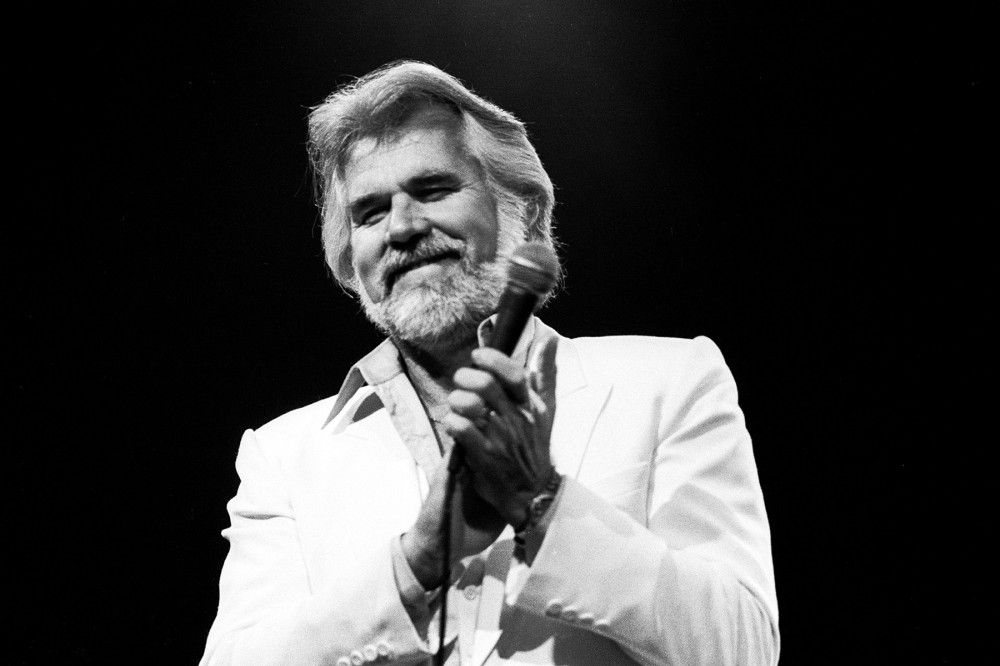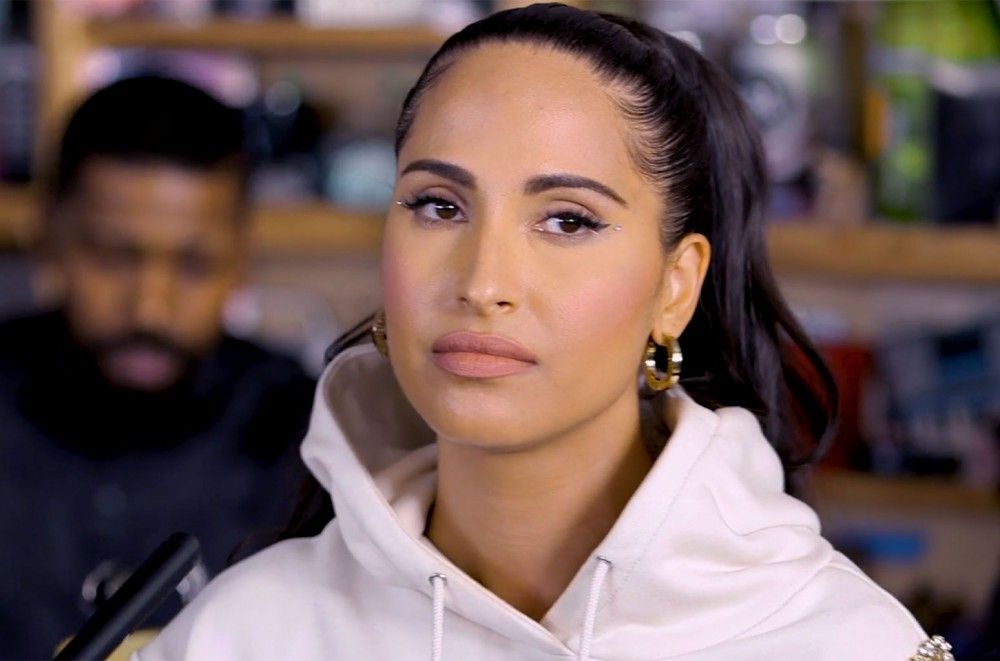
Kenny Rogers, Country Music's 'The Gambler,' Dead at 81
From bold psychedelic rockers and cinematic story songs to sentimental country-pop, covered considerable musical turf throughout six decades of recording and performing, using his gravel-tinged vocals to dramatic effect. Along the way, he also became a globally recognized actor, photographer, businessman, and philanthropist. When Rogers announced his final Nashville concert in 2017, after 60 years of performances, he acknowledged his mobility had become more limited in recent years. Rogers died Friday night at age 81 from natural causes, his rep confirmed in a statement.
“The Rogers family is sad to announce that Kenny Rogers passed away last night at 10:25PM at the age of 81,” his rep said. “Rogers passed away peacefully at home from natural causes under the care of hospice and surrounded by his family. The family is planning a small private service at this time out of concern for the national COVID-19 emergency. They look forward to celebrating Kenny’s life publicly with his friends and fans at a later date.
Featured on a staggering 30 Number One singles across the U.S. pop, country, and adult contemporary charts from 1977 to 1999, Rogers earned three Grammys, six CMA awards, and eight ACM awards, along with membership in the Country Music Hall of Fame. He also charted internationally with some of his most enduring hits, including “The Gambler,” “Lucille,” and “Islands in the Stream,” the breezy Bee Gees-penned 1983 collaboration (from the Barry Gibb-produced album Eyes That See in the Dark) with Dolly Parton.
A founding member of folk-rock group the First Edition, the bearded entertainer with the rich, soulful voice was a staple on TV’s most influential variety series throughout the Sixties and Seventies, making regular appearances on shows hosted by Ed Sullivan, Johnny Cash and Glen Campbell, among many others. His final Nashville concert, in October 2017, featured his last-ever performance with Parton, and appearances from Reba McEntire, Alison Krauss, Darius Rucker, Jamey Johnson, Elle King, Broadway and film star Idina Menzel, and the alt-rockers Flaming Lips.
Born August 21st, 1938, Kenneth Ray Rogers was the fourth of eight children, raised in the San Felipe Courts, a public-housing project in Houston’s Fourth Ward. Exposed to everything from jazz and R&B to pop and country, Rogers played guitar and sang in a doo-wop vocal group he formed at Jefferson Davis High School in 1956 called the Scholars. In 1958 (billed on the label as “Kenneth Rogers”), he scored a solo hit for Carlton Records called “That Crazy Feeling.” Although it didn’t enter the national charts, the single’s regional success led to his first-ever appearance on American Bandstand.
Rogers would learn to play bass for his next gig as a member of the Houston jazz trio the Bobby Doyle Three. Moving to Los Angeles, he would join the New Christy Minstrels, the popular folk group that included “But You Know I Love You” songwriter Mike Settle. His audition for Settle took place over the telephone in a hotel lobby with hotel patrons looking on and listening in as Settle begged Rogers to sing at a higher volume so he could hear him more clearly. In 1967, Rogers, Settle and two other members of the Minstrels would go on to form the First Edition, the genre-defying group that would reach the Top Five with their sophomore single on Reprise Records, Mickey Newbury’s trippy “Just Dropped In (to See What Condition My Condition Was In).” Featuring Glen Campbell on guitar, the tune was the first of the group’s seven Top 40 pop hits, which also included their chilling take on the Mel Tillis classic “Ruby, Don’t Take Your Love to Town,” addressing the personal anguish of a paralyzed veteran of “that crazy Asian war.”
Rogers’ gruff, smoldering vocals would also distinguish another of the group’s biggest hits, the Mac Davis-penned “Something’s Burning.” In 1969, the group recorded their fourth LP, Ruby, Don’t Take Your Love to Town, which also featured the hit “Reuben James” and their version of Kris Kristofferson’s “Me and Bobby McGee.” The LP was the first to feature the group credited as “Kenny Rogers and the First Edition” on the cover. By this time, Rogers had been introduced to Ken Kragen, who would be his manager for 33 years, until he was fired and sued by the entertainer in 2001.
Signed to United Artists Records in 1974 by producer and Nashville label head Larry Butler, Rogers’ first LP there, Love Lifted Me, produced only minor hits. But in 1977, he would earn his first Number One country smash (and first pop Top Five solo hit) with the mournful barroom ballad “Lucille.” A Number One in the U.K. and other countries, the Hal Bynum-penned weeper paved the way for Rogers’ conversational singing style to make blockbuster hits of story-to-screen tales including “The Gambler” and “Coward of the County.” Another 1977 hit, “Sweet Music Man,” which Rogers wrote, would later by covered by Dolly Parton, Tammy Wynette, Waylon Jennings and Reba McEntire, among others.
With “The Gambler,” Rogers hit a musical trifecta: a ghostly allegory built around trains, the draw of the cards, and the wisdom of the aged. Nashville songwriter Don Schlitz, who was working the night shift at Vanderbilt University and pitching his tunes around Music Row in the daytime, would take home a Grammy and CMA Song of the Year honors for it, but Rogers parlayed it into a mini-empire, portraying fictional Old West gambler Brady Hawkes in five made-for-TV films from 1980 to 1994. The song also spawned a slot machine, a book series, and Rogers’ appearance in a humorous 2014 GEICO Insurance commercial, where his a cappella rendition of the song’s memorable chorus (“You got to know when to hold ’em, know when to fold ’em…”) annoys his fellow poker players. The song was sampled on the Fugees’ 1996 LP The Score and a 2000 hip-hop remix features Rogers along with Wyclef Jean and Pharoahe Monch. Reggae artist Busy Signal covered it in 2011.
While “The Gambler” was a country-to-pop crossover hit, Rogers’ next several singles, alternating between ballads (“She Believes in Me,” the Grammy-winning “You Decorated My Life”) and story songs (“Coward of the Country”), kept his feet firmly planted in both worlds, culminating in a six-week Number One pop tune in “Lady,” penned by Lionel Richie. He also scored a smash duet, “Don’t Fall in Love With a Dreamer,” with Kim Carnes, who wrote an entire concept album with husband Dave Ellingson at Rogers’ request. Gideon, which through its dozen tracks told the story of Texas cowboy Gideon Tanner, was Rogers’ fifth Number One country album and another Top 20 entry on the multi-genre Billboard 200. Interestingly, Rogers, with his former band the First Edition, had previously recorded a concept album about a California town, The Ballad of Calico, in 1972. That album was penned entirely by future country hitmaker Michael Martin Murphey and Larry Cansler.
One of country music’s first acts to sell out arenas, Rogers’ 1980 Greatest Hits has since sold in excess of 24 million copies worldwide. The 1981 LP Share Your Love featured appearances from Michael Jackson and Gladys Knight, and included three songs penned by Lionel Richie.
Teaming with Dottie West, Rogers’ collaborations with the late singer in the Seventies and early Eighties accounted for five massive hits for the pair, including the Number Ones “Every Time Two Fools Collide,” “All I Ever Need Is You,” and “What Are We Doin’ In Love.”
Rogers’ sole starring role in a feature film was as racecar driver Brewster Baker in the 1982 comedy-drama Six Pack, which featured a young Diane Lane. He also sang the film’s hit theme song “Love Will Turn You Around.” A year later, he notched yet another hit duet, with Sheena Easton, on Bob Seger’s “We’ve Got Tonight.”
In 1984, he reunited with Dolly Parton to record the holiday LP Once Upon a Christmas. They also topped the country charts again in 1985 with “Real Love.” Other collaborations included the 1984 Grammy-nominated trio single “What About Me?” with Kim Carnes and James Ingram, and 1987’s “Make No Mistake (She’s Mine),” with Ronnie Milsap. Rogers was also a featured performer in the 1985 megastar USA for Africa collaboration “We Are the World,” alongside Michael Jackson, Bob Dylan, Ray Charles, Bruce Springsteen, and more. Rogers’ soft-rock-influenced 1985 LP The Heart of the Matter, produced by George Martin, who guided the majority of the Beatles’ historic recordings, was the singer’s last to top the Billboard Country Albums chart. In 1986, under the pseudonym “Joey Coco,” Prince penned the power ballad “You’re My Love,” for Rogers, who cut it for his They Don’t Make Them Like They Used To album.
From 1992 to 1994, Rogers hosted the highly rated A&E history series The Real West. His 1993 album on the Giant label, If Only My Heart Had a Voice, featured “Ol’ Red,” which later became one of Blake Shelton’s first hit singles. He returned to his musical roots as a member of the Bobby Doyle Three with the 1994 collection Timepiece, consisting of jazz standards from Hoagy Carmichael, Ira Gershwin, and more. In 1999, Rogers’ own Dreamcatcher label issued the She Rides Wild Horses LP, featuring first single “The Greatest,” penned by “The Gambler” tunesmith Don Schlitz. A subsequent release from the album, “Buy Me a Rose,” with Alison Krauss and Billy Dean, marked Rogers’ return to the top spot on the Country Singles chart for the first time in almost 13 years. In 2005, Rogers and Parton topped the list of CMT’s 100 Greatest Duets with “Islands in the Stream.” It marked the last time the pair had performed together onstage until Rogers’ farewell concert in Nashville in October 2017.
A co-founder of the Kenny Rogers Roasters restaurant franchise (which would form the basis of an entire 1996 episode of Seinfeld), the singer was also involved in ventures in the once-thriving live-entertainment destination of Branson, Missouri. In 1977, Rogers performed at the 25th annual Jaycee Bootheel Rodeo in Sikeston, Missouri. His donation of an Arabian stallion, auctioned off for $75,000, jumpstarted the funding for a new center to serve children with a variety of special needs and developmental disabilities. In June 1979, construction of the Kenny Rogers United Cerebral Palsy Center of Southeast Missouri was completed and in 2000 it was rechristened the Kenny Rogers Children’s Center.
Rogers, who told Billboard magazine in 2000, “I’ve never considered myself a great singer but I am a great storyteller,” explored another medium in which to tell stories, taking up photography while living in Los Angeles with fourth wife Marianne, who was a model. An amateur photographer for most of his adult life, Rogers began taking portfolio shots of his wife and set up a small darkroom at home in which to develop the photos. He then studied with photographer John Sexton, a former assistant and technical consultant in the Eighties to the legendary Ansel Adams. He also studied portrait photography with Yousuf Karsh, also known as Karsh of Ottawa. This led to the 1986 publication of Kenny Rogers’ America, with many of the photos taken across the country while the musician was on tour.
His second collection a year later, Your Friends and Mine, featured 8 x 10 portraits of Hollywood celebrities including Elizabeth Taylor, who graced the cover, and Michael Jackson, photographed with Bubbles, his beloved chimpanzee. In 2005, This Is My Country featured more than 50 of Rogers’ black-and-white portraits of country stars Faith Hill, Reba McEntire, Brad Paisley, Tammy Wynette, Roy Acuff, Minnie Pearl, Willie Nelson, Tim McGraw, Alan Jackson, Dolly Parton and others. Rogers also authored several books, including The Greatest, based on his hit song penned by Schlitz, and The Toy Shoppe, inspired by his touring musical play presented during his annual Christmas tour, which was among the longest-running holiday concert tours of all time.
Rogers was inducted into the Country Music Hall of Fame in 2013, and received a Grammy nomination with Dolly Parton the following year for their duet “You Can’t Make Old Friends.” Not long before his 2017 retirement, Rogers played to hundreds of thousands of attendees at iconic music festivals including Bonnaroo, Glastonbury, and Morocco’s Festival Timitar.
“I tried not to compromise. I did songs I believed in, because you do them with more authority and you do them with a greater sense of belief,” Rogers said of his legacy as an artist to Rolling Stone Country in 2017. “If you do that… if you have something you believe in, you have to stick to it and you have to commit to it. That’s what I think I’ve done best. I’ve believed in things and I’ve stuck to ’em.”



